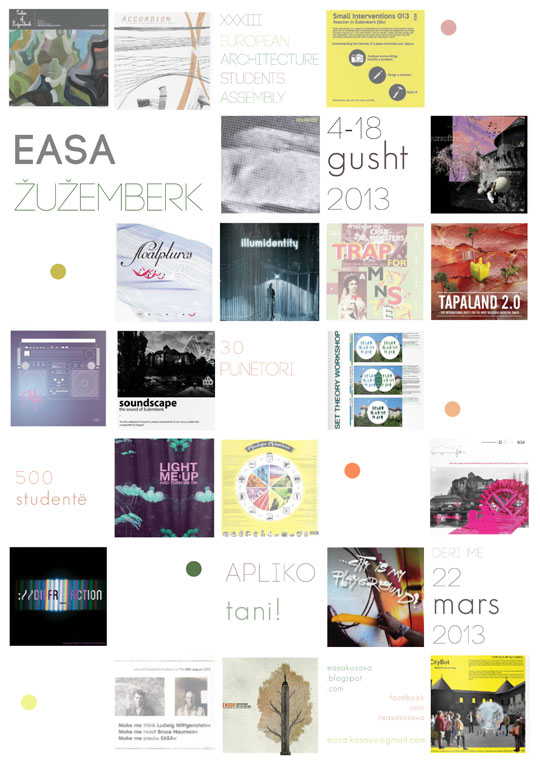Lectures: the art of extra credit
Scholars are not only defined by acquiring academic knowledge, rather by sharing the social responsibility that derives from that knowledge, for they need to be as much active inside their academic curriculum as outside of it. As today`s trends have shifted from emphasizing “star architects” to raising consciousness on the social responsibility of their architecture, students as future urban shapers need to welcome the idea of participating on public discourses and debates even if there is no extra credit involved. Despite the lack of international speakers and substandard education practices in our universities, public lectures and workshops host fairly large amount of audience, an occurrence which is to venerate and gives hope that things are changing for good.
In the verge of their public lectures and interdisciplinary debates on spatial and cultural issues, Archis Interventions, in collaboration with the University of Prishtina, held the lecture Perspectives of Urban Development in the Modelarium of the Faculty of Architecture and Engineering on Friday the 22nd. This lecture was held in two distinctively different parts and lasted little over two hours.
The first part, Contemporary Architecture Engaging with Society, was hosted by art historian Andres Lepik, former architecture curator at the Museum of Modern Art (MoMA) in New York and the Graduate School of Design at Harvard University, currently teaching Architectural History at the Technical University of Munich. Prof. Lepik presented contemporary examples of social engagement in architecture on a global scale, where the role of the architect crosses the boundaries of being technical and takes humane dimensions. Prof. Lepik explored various strategies of how design can actively influence underserved communities, among which examples was the city of Caracas (Venezuela), where there is a crucial necessity to bridge the gap of social segregation that partial urban developments have caused. Moreover, the lecture shed light in the post-disaster design approaches after Huricane Katrina in the US, the homeless shelter solutions in the city of Los Angeles, low-income housing in Chile, and the channeled political pressure in urban decision-making stands in Paris. “Architecture is not only for the top 1%” Prof. Lepik added at the end, a personalized perspective that is the focus of the research in his recent book Moderators of Change as well.
The second part, Prishtina on Crossroads, was hosted by the Croatian architect Vedran Mimica, former curator of the International Architecture Biennale Rotterdam 2007 and director of The Berlage Institute in Rotterdam, currently a professor at The College of Architecture at Illinois Institute of Technology in Chicago. Prof. Mimica concentrated his lecture on the development of European capitals, mainly in the Ballkans (like Zagreb, Ljubljana, Sarajevo), emphasizing their urban transformation from the historic past to the modern day development. “Architecture cannot confine itself within its own boundaries when you speak of a city” Prof. Mimica stated after showing the audience movie inserts of the sociologist Saskia Sassen and architect Rem Koolhaas on globalization and global cities. Returning to the lecture`s theme, Prof. Mimica focused on the development of the city of Tirana, highlighting former Mayor Rama`s city makeover and the ever-growing urban competitions that are introducing a new era of urbanism to its residents. To sum his lecture up, Prof. Mimica drew a common line between these cities and the “booming metropolis,” as he called Prishtina, stressing out its “turbo urbanism” where the new and the old do not share the common ground of urban coherence. Enhanced governance policies, flexible infrastructure and a reputable urban identity are the key components that Prof. Mimica sees in the future urban development of the city of Prishtina. “The attempt to re-make urban life (and thereby ourselves) in a different image depends upon a greater degree of enlightened democratization than currently exists” concluded Prof. Mimica.
Images are courtesy of ONUP.




